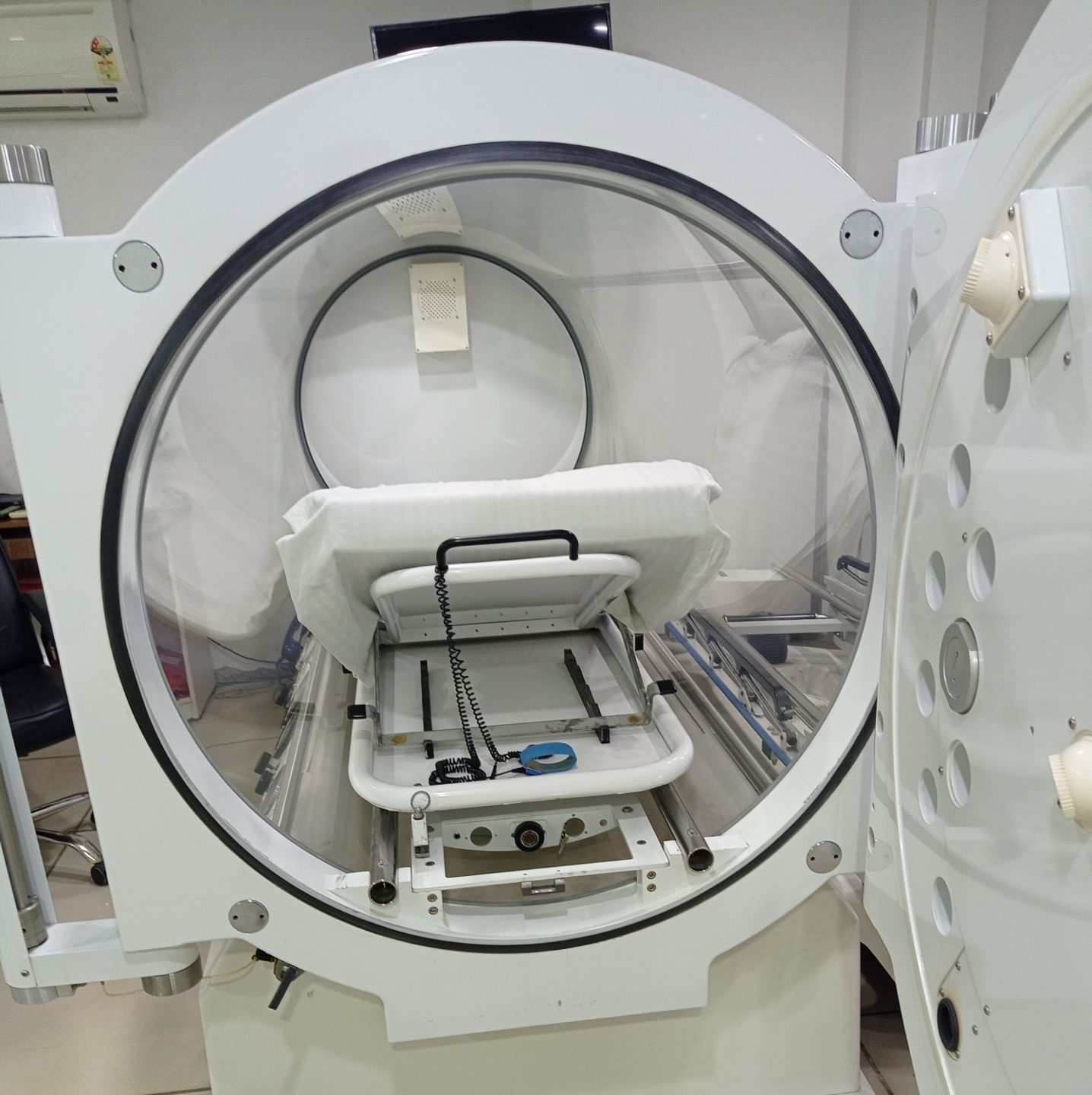
What is Hyperbaric Therapy?
Hyperbaric Oxygen Therapy (HBOT) is a special medical device that uses oxygen under pressure to help accelerate healing for multiple conditions in patients. At times, HBOT has reversed issues that people may face such as random hearing loss. For this therapy, you would enter a chamber, whether it’s a monochamber or a multiplace chamber, you will start feeling the pressure change to levels up to 3 times the average and you will start breathing 10x the amount of oxygen in the process. The goal is to feed oxygen everywhere in the body that needs to repair tissue and regrow needed vessels at an accelerated rate.
What Treatments Does Insurance Cover For HBOT?
While Hyperbaric Oxygen Therapy or HBOT is a medical device, it does not cover everything, in fact, there are only about 14 indications that Insurance would cover as a treatment. Even Though there are many uses for hyperbarics itself, it is still expensive and meant for a specific minority group of people who have certain conditions. Even Though Hyperbarics is not mainstream yet, research for different treatments is growing and it can start helping people realize the benefits it holds.
The treatments that are commonly approved by insurance are listed below:
- Air or Gas Embolism
- Carbon Monoxide Poisoning
- Gas Gangrene
- Crush Injury
- Decompression Sickness
- Arterial Inefficiencies: Central Retinal Artery Occlusion
- Select Problem Wounds
- Severe Anemia
- Intracranial Abscess
- Necrotizing Soft Tissue Infections
- Osteomyelitis
- Delayed Radiation Injury
- Skin Grafts and Flaps
- Acute Thermal Burn Injury
- Idiopathic Sudden Sensorineural Hearing Loss
Insurance companies such as Medicare, UnitedHealthcare, Cigna, BlueCross, Aetna, and Humana are all accepted and can be billed for treatment. You are more successful for insurance to pay for your treatment. It is one of the above conditions you are suffering with. Once insurance is qualified, you do not have to stress about the payments and your clinic will arrange all payment footprints for you directly. It’s important to know that the medical conditions listed above have different acceptance depending on the insurance and provider you have.
The Most Common Reasons HBOT is Done
Non-Healing Wounds
One of the best things Hyperbarics has achieved is helping patients who have terrible non-healing wounds that normal wound care cannot treat. With normal wound care and HBOT combined, non-healing wounds have a chance to survive in the area by swarming oxygen to the area of the wound and providing blood flow and new vessels for the wound area to heal. Alone, these types of chronic non-healing wounds can take a long time to heal, if it ever heals. These wounds can have a serious impact on your health as bacteria can form and enter the wounds. With HBOT, the body will accelerate its own natural healing process and help the area of the wound survive.
A person with diabetes will have a harder time with healing alone if not taken care of immediately. Diabetes affects the normal body’s healing process by not giving white blood cells the proper supply necessary to fight infection or close a wound. This side by side with more circulation with not enough red blood cells to make it to these challenging wounds can have a serious impact on your health. HBOT has become the leading treatment for these types of wounds and delivers rich pressurized oxygen to kill bacteria and accelerate the body to its normal or more advanced healing process.
Carbon Monoxide Poisoning
One of the best ways to help someone with Carbon Monoxide Poisoning is to increase a person’s blood oxygen level to reduce the amount of carbon monoxide. Carbon Monoxide has the ability to bind to hemoglobin and shift oxygen levels fairly quickly. By entering a Hyperbaric Oxygen Therapy chamber you will be able to increase your oxygen levels by 10x under pressure. This would make the process of removing the carbon monoxide from your body much easier and quickly recover you from more damage to the circulatory system.
Air or Gas Embolism
Air or Gas embolism occurs when air bubbles enter the vein and block it. These air bubbles can travel across to your arteries, brain, heart and lungs. If not taken immediate action, air embolism can lead to respiratory failure. One of the leading causes of air embolism is by scuba diving who breathe compressed air. It can happen to people who spend too much time underwater, resurface too quickly from underwater and hold their breath too long as they come up. Symptoms may include chest pain, low blood sugar, blurred vision, irregular heartbeat, and loss of consciousness.